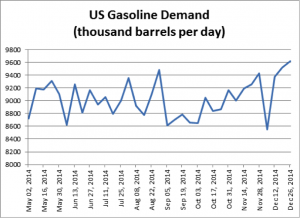Tesla going full speed ahead, but it has competition
Shrugging off any concern about falling gas prices, Tesla is planning to have its medium-priced Model III on the road by 2017. If it meets with anything like the reception of the 2014 Model S, Tesla will be in good shape.
Auto reviewers were ecstatic about the Model S, saying it put Tesla in a class by itself. As Ali Aslani wrote on MasterHerald.com:
If you think electric cars are slow and wretched creatures, you obviously haven’t seen the 2014 Tesla Model S. This vehicle is a beast on wheels that will make you forget half your life’s problems, until you look down at the dash and remember that you cannot pull up to a gas station for refueling, once you run out.
That refueling is becoming less and less common, however, as Tesla’s battery technology has pushed the range for its vehicles to 400 km, or 250 miles. It’s enough for a good commute to work. And recharging stations are becoming more common as Tesla and other auto manufacturers push to have them installed.
What really turns on car enthusiasts, however, is the acceleration possible with an electric motor. Alex Kerston posted a video on CarThrottle.com, in which a user who normally drives a Lamborghini Aventador has just ridden in the 691-hp Model S P85D:
The acceleration is ridiculous. I daily drive an Aventador and I thought I got used to fast acceleration. But no. … As a passenger, you do not get a chance to get ready for it at all. My internal organs were glued to the back of my body. … after about a dozen of those 0-60 accelerations, I felt like I had to puke – probably the first time I’ve felt this way in many years.
The question is, is this the kind of performance ordinary drivers are looking for? The Model III will weigh 1,000 pounds more than the Model S and therefore won’t be in the same class as the roadsters. But at $35,000 to $50,000, it will still be in the higher class of buyers. With all the inconveniences of recharging and being a first mover in the electric field, it will be a wonder if the Tesla standard model will be able to reach the 500,000 sales mark at which the company is aiming.
Meanwhile, other auto manufacturers are not standing still. Last week, Volkswagen, the largest auto company in the world, reportedly bought a stake in the Silicon Valley battery manufacturer QuantumScape, which gives VW access to a technology that could potentially deliver far more range that Tesla’s 400 km. QuantumScape’s solid-state batteries also carry a smaller risk of fire than the lithium-ion batteries used in many electric vehicles, including Tesla’s. Hybrid technology leader Toyota has been developing comparable technology since at least 2010, and EV leader Nissan has been promising similar developments. By the time Tesla comes to market with its lithium-ion-driven Model III, it could end up looking downright conservative in its technology.
Volkswagen’s investment in solid-state batteries is especially interesting, since at one point it was actually copying Tesla’s approach to EV battery technology. In 2009 and 2010, Volkswagen was working with Tesla co-founder Marin Eberhard on Tesla’s cylindrical-style lithium batteries but rejected the technology as too complex when it brought the e-Golf to market. Now Volkswagen is looking to leapfrog Tesla into solid-state technology.
Volkswagen Group is planning a short-term offensive against Tesla. It will bring out the $100,000 electric R8 sports car to compete with the Model S. Also in the works is the forthcoming Q8 crossover coupe. Both cars will be produced by VW’s Audi subsidiary.
Other manufacturers are taking aim at Tesla’s share of the $100,000 electric sports-car market. BMW is likely to add more products to its electric “I” brand and has unveiled an electric powertrain that it’s calling the “Tesla killer.” Porsche, also owned by Volkswagen Group, is said to be planning an electric version of a smaller sedan, code-named the Pajun. Former Tesla investor Mercedes-Benz is also working on an electric version of its flagship S-Class vehicles.
The takeaway is that powerful electric vehicles with a suitable range are no longer going to be a luxury item. If Tesla is successful in breaking through with the Model III, it’s going to be followed quickly by competitors in the same class and perhaps with a different technology.


